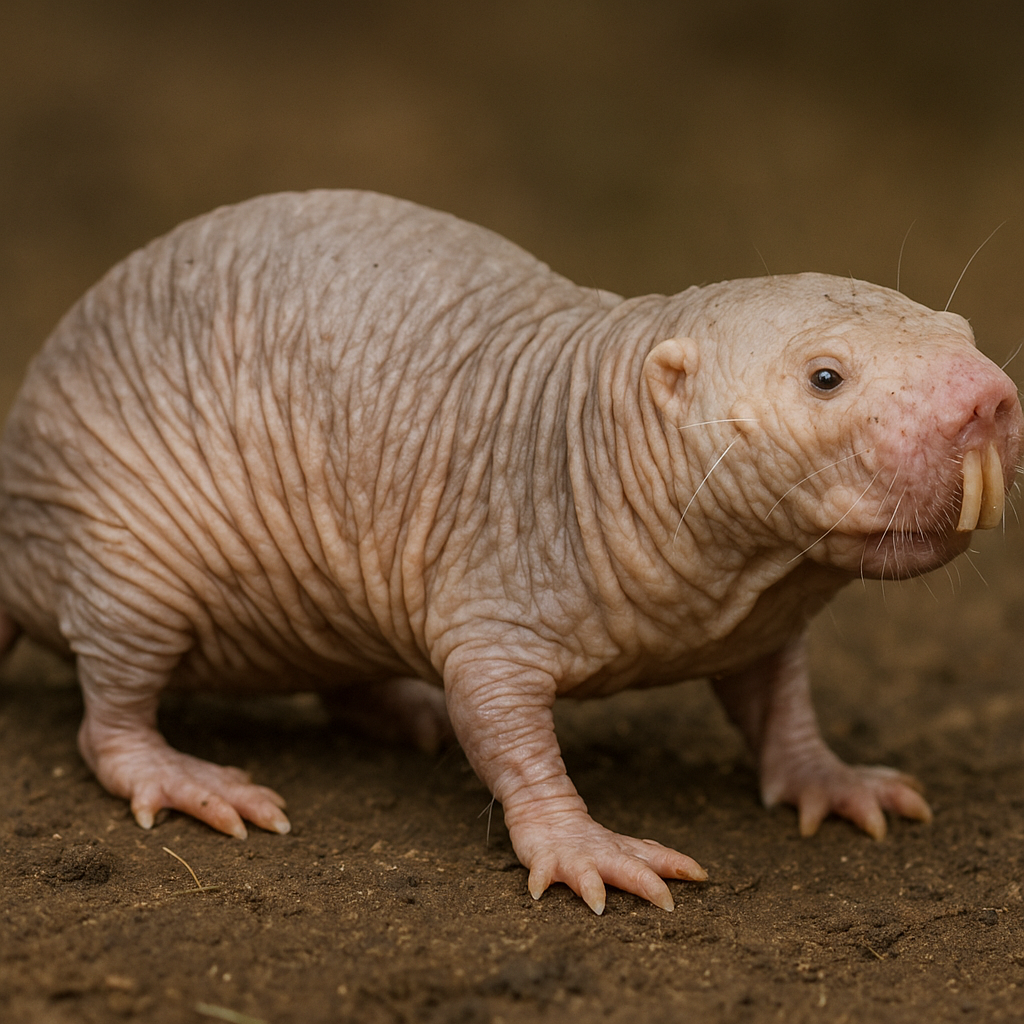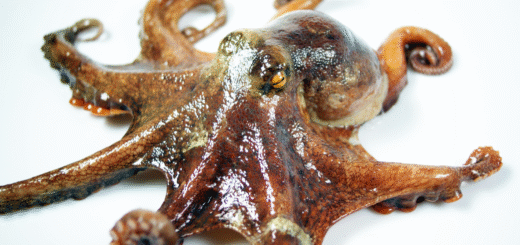The Naked Mole Rat: Nature’s Unlikely Marvel
The naked mole rat (scientific name: Heterocephalus glaber) is a fascinating and highly unique creature, often overlooked in the world of animals. Native to parts of East Africa, this burrowing rodent is known for its distinctive appearance and surprising biological traits. In this article, we will explore everything you need to know about the naked mole rat, including its unusual anatomy, behavior, and remarkable adaptations that make it one of nature’s true marvels.

What is a Naked Mole Rat?
The naked mole rat is a small, burrowing mammal with a nearly hairless, wrinkled body and large, protruding teeth. Despite its name, it’s not a mole, but rather a rodent that belongs to the family Bathyergidae. It is called a “naked” mole rat due to its lack of fur, which makes it stand out among other rodents. Instead of a smooth, sleek coat, it has pinkish skin, which serves to highlight its unusual form.
These creatures typically measure between 8 to 10 cm in length, with a tail length of 3 to 5 cm. Though they have poor eyesight, their sensory adaptations make them well-suited for life underground, where they spend most of their time.
The Naked Mole Rat’s Social Structure
One of the most intriguing aspects of the naked mole rat is its social structure. Much like ants and bees, naked mole rats live in highly organized colonies with complex social hierarchies. Each colony is led by a single queen, and only she is responsible for reproduction. The queen mates with one or more males, while other members of the colony serve as workers, soldiers, or caretakers.
The social order within these colonies is fascinating. Workers are responsible for digging tunnels and foraging for food, while soldiers protect the colony from predators. The queen and her breeding males are the only members that reproduce, creating a cooperative society based on division of labor. This highly organized structure is not unlike that of a beehive, with each mole rat contributing to the overall survival and efficiency of the group.
Unique Physical Traits
The naked mole rat’s lack of fur is perhaps its most well-known feature. The skin, which is typically a pale pink or yellow, appears wrinkled and exposed, giving the animal a somewhat alien appearance. This lack of fur is thought to be an adaptation to its underground environment, helping the mole rat to move more easily through tight tunnels.
Moreover, naked mole rats are equipped with a pair of large, protruding front teeth that they use for digging. These teeth are not connected to their lips, so they can keep their mouth closed while digging. This is a crucial adaptation, as it helps them to burrow through soil without dirt entering their mouths.
Adaptations for Survival
The naked mole rat’s underground lifestyle has led to several fascinating survival adaptations. Some of the most notable include:
1. Lack of Pain Sensitivity
Naked mole rats are unique in their ability to tolerate extreme conditions that would be painful or lethal to other animals. One of the most remarkable traits is their insensitivity to certain types of pain, particularly from acid or capsaicin (the compound that makes chili peppers spicy). This ability may be linked to their lifestyle in dark, tight tunnels where avoiding injury is vital.
2. Resistance to Cancer
Another significant feature of naked mole rats is their resistance to cancer. Researchers have studied the animal’s remarkable ability to avoid tumors, even in older age. Their cells produce high levels of a specific protein, hyaluronic acid, which is thought to prevent the growth of cancerous cells. This discovery has made naked mole rats a subject of intense medical research, as scientists hope to unlock secrets to cancer prevention or treatment.
3. Social Immunity
Because they live in colonies with many individuals, the naked mole rat exhibits a fascinating form of social immunity. In tight-knit groups, diseases can spread quickly, but naked mole rats show an impressive ability to maintain colony health by sharing resources and even grooming each other. This communal behavior helps prevent the spread of infections.
4. Low Oxygen Tolerance
Naked mole rats are also known for their ability to tolerate low levels of oxygen. In their underground burrows, where air circulation is limited, these rodents are capable of surviving in hypoxic conditions that would be lethal to most other mammals. They can adjust their metabolic rate to survive in environments with less oxygen.
Diet and Feeding Habits
Naked mole rats are herbivores, with a diet that mainly consists of tubers. These underground plants provide the colony with food, and the mole rats are skilled at finding and harvesting them. They use their sharp teeth to dig into the earth and access these food sources. In fact, they can spend up to 90% of their time digging, which is vital to their survival.
Interestingly, they have a specialized gut microbiome that helps them digest tough, fibrous plant material. This allows them to extract the maximum nutritional value from their limited diet.
Naked Mole Rat’s Lifespan
Despite their peculiar appearance and subterranean lifestyle, naked mole rats have a relatively long lifespan compared to other rodents. They can live up to 30 years, which is unusually long for a rodent of their size. This longevity is likely due to their low metabolic rate and their resistance to disease and cancer.
Why Are Naked Mole Rats Important to Science?
Naked mole rats are not only fascinating because of their appearance and social behavior, but they also offer researchers valuable insights into the biology of aging, pain resistance, and cancer immunity. Their long lifespan, lack of pain sensitivity, and ability to avoid cancer have made them a subject of intense study. Scientists hope that the secrets of the naked mole rat can be applied to human health, potentially improving our understanding of aging, disease resistance, and cancer prevention.
Conclusion
The naked mole rat is truly one of the most unique animals on Earth. From its subterranean lifestyle and social structure to its remarkable resistance to pain and cancer, this quirky rodent continues to fascinate scientists and animal lovers alike. With ongoing research, we may one day unlock even more secrets of the naked mole rat, improving our understanding of biology and human health in unexpected ways.








